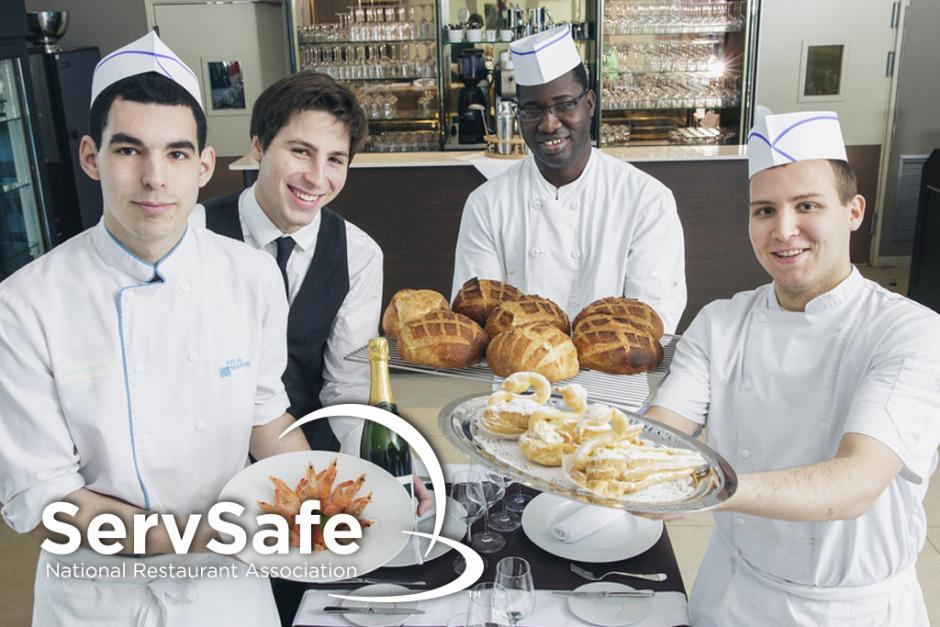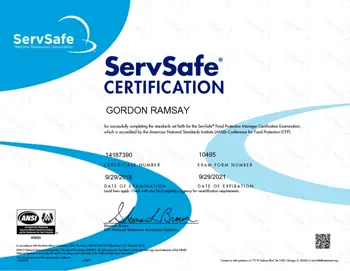Comprehensive Food Handlers Training for Hygiene and Security
In today's rapidly progressing food solution landscape, thorough food trainers training has actually become a critical component for making sure hygiene and safety. By instilling vital practices connected to hand health, food storage, and cleanliness, this training not only mitigates the risk of foodborne ailments yet also enhances conformity with regulatory standards. The effects of such training extend past mere conformity; they discuss public health and wellness and consumer count on. The effectiveness of these training programs can differ considerably. What aspects really determine their success in cultivating a culture of safety?
Significance of Food Safety And Security Training

Furthermore, food safety training helps to make sure that workers recognize existing regulations and standards, which are essential for keeping functional licenses and staying clear of costly fines. Normal training sessions also offer as a platform for enhancing finest techniques, thus minimizing the possibility of human error, which usually functions as a leading reason for food contamination.
Furthermore, buying food safety training can improve an establishment's credibility, as customers progressively focus on eating experiences that mirror high security requirements. Such positive measures not just safeguard consumers yet also add to the long-term success of food organizations. In summary, thorough food security training is an important aspect of food service procedures, straight impacting both public health and wellness and business sustainability.
Trick Concepts of Hygiene
Maintaining high standards of hygiene is important in any type of food taking care of setting to avoid contamination and ensure the security of customers. The key principles of hygiene encompass numerous vital practices that food trainers should consistently use.
First, hand health is vital; food handlers ought to clean their hands completely with soap and water before and after handling food, as well as after utilizing the toilet or touching any possibly polluted surfaces. Tools and surfaces need to be consistently cleansed and sanitized to get rid of pathogens. This includes tools, cutting boards, and kitchen counters, which must be maintained in a tidy condition.


Appropriate food storage space is likewise important; raw foods should be saved individually from prepared or ready-to-eat products to prevent cross-contamination. servsafe manager. Furthermore, preserving suitable temperature controls is critical; perishable things should be maintained safe temperatures to hinder bacterial growth
Lastly, individual hygiene can not be forgotten. Food trainers must put on clean clothes, usage hair restrictions, and avoid functioning when ill. By sticking to these vital concepts of hygiene, food handlers can substantially minimize the threat of foodborne ailments and promote a more secure eating experience for all consumers.
Typical Foodborne Illnesses
Although many foodborne diseases can be protected against through appropriate health and safe food handling practices, they continue to be a significant public health and wellness problem. Foodborne microorganisms can lead to a variety helpful hints of illnesses, ranging from moderate intestinal distress to serious difficulties and also death.
Common foodborne diseases include salmonellosis, created by Salmonella bacteria, typically connected to undercooked poultry and eggs. One more widespread illness is listeriosis, linked with unpasteurized milk products and ready-to-eat meats, which can be specifically unsafe for expectant females and immunocompromised people. Norovirus, often gotten from infected food or surfaces, is recognized for its fast spread and ability to cause outbreaks in public setups.
Escherichia coli (E. coli) infection, especially connected with undercooked ground beef and infected produce, can lead to severe abdominal cramps and kidney failure sometimes. Additionally, Clostridium perfringens, often discovered in huge quantities of food that are poorly stored, can trigger food poisoning with signs appearing shortly after consumption.
Comprehending these illnesses is vital for food handlers, as understanding can significantly lower the threat of contamination and protect public health and wellness. Proper education and training are vital elements in combating foodborne conditions.
Finest Practices for Food Handling
Reliable food dealing with methods are important in preventing the spread of foodborne diseases. To start with, proper hand hygiene is important; food handlers have to wash their hands extensively with soap and water before and after managing food, specifically raw meat or fowl - servsafe alcohol. This straightforward useful source action dramatically reduces the risk of cross-contamination
Second of all, preserving proper food storage space temperature levels is vital. Regularly sterilize kitchen counters, reducing boards, and tools, specifically after preparing raw foods. Usage different cutting boards for raw and ready-to-eat foods to further minimize contamination risks.
Furthermore, when preparing food, it is very important to comply with the principle of "very first in, initially out" (FIFO) to handle stock effectively and minimize spoilage. Always review and adhere to food product tags for risk-free cooking temperatures and managing instructions. By implementing these ideal methods, food trainers can substantially improve food security and secure public health.
Implementing a Safety And Security Society
Creating a security culture within a food taking care of atmosphere is crucial for cultivating a commitment to food safety amongst all staff participants. This society emphasizes the importance of food security as a shared responsibility, motivating employees to focus on hygiene methods continually.
To execute a safety culture, companies ought to start by offering extensive training that attends to food handling protocols, possible risks, and the relevance of individual hygiene. Educating sessions should be interactive and tailored to the particular duties of personnel, making sure relevance and interaction.
In addition, management plays a critical function in developing this culture. Management should model secure practices and communicate the importance of food security consistently. Identifying and compensating employees who promote safety criteria can even more strengthen these habits.
Furthermore, open communication networks have to be established, permitting staff to report security issues without concern of consequence. Routine safety and security audits and responses sessions can aid identify areas for improvement and strengthen liability.
Ultimately, cultivating a safety culture not just boosts conformity with food safety laws but also safeguards public health, cultivates staff member spirits, and adds to the overall success of the food managing facility.
Final Thought
Finally, detailed food trainers training plays an essential duty in promoting health and safety and security within food solution establishments. By gearing up staff members with crucial expertise about food security concepts, usual foodborne health problems, and finest techniques for taking care of food, such training dramatically reduces health dangers. Additionally, fostering a society of safety and security boosts the establishment's credibility and aligns with consumer assumptions for high safety and security requirements, eventually adding to public health and wellness protection and the total success of the food solution industry.
In today's swiftly progressing food service landscape, detailed food more tips here trainers training has arised as a vital component for making sure hygiene and security.Food safety training is vital for maintaining high requirements in food handling and prep work, with research studies showing that proper training can minimize foodborne illnesses by up to 30%. In recap, extensive food safety and security training is a vital element of food service procedures, straight impacting both public health and wellness and business sustainability.

Comments on “Vital Abilities for Success as a ServSafe Manager in a Busy Restaurant Environment”